Montreal Canadiens: What Will Be Marc Bergevin’s Legacy?

Wednesday, May 2nd, 2012. Edvard Munch’s The Scream is sold for $119 million dollars in a public auction, Lionel Messi breaks Gerd Müller’s record of goals in a season with 68, and Marc Bergevin is hired as the General Manager of the Montreal Canadiens.
Marc Bergevin had a long career as a defender, reaching the 1,000 game milestone before retiring in 2004. He was drafted by the Blackhawks, and spent time with the Islanders, Whalers, Lightning, Penguins, Red Wings, Canucks and Blues. He never was much on the scoresheet scoring 36 goals and 181 points, but registered 1,090 penalty minutes.
He was alternate captain of the Penguins, Lightning and Blues. But his time as a player might be best known for this play, where he picks up the puck and throws it directly into his own net.
So that is the legacy of Marc Bergevin’s playing career. A little known, if long-lasting defensive defenseman, who scored one of the funniest own goals of all time. His legacy as a General Manager of the Montreal Canadiens is a bit tougher to pin down.
There are different levels of General Manager. There is the Jim Bennings of the hockey world. In the 2020 offseason, Benning traded Nate Schmidt for pennies (as Vegas was gearing up to sign Pietrangelo), signed Brayden Holtby as a free agent, and resigned youngster Jake Virtanen. Just one year later Schmidt plays for the Winnipeg Jets, Holtby and his tortoises moved down south to Dallas, and Virtanen has been jettisoned off to the KHL.
But Bergevin was also not among the league’s elite managers, your Julien BriseBoises and Steve Yzermans. In fact, Bergevin lost a trade to Brisebois, but we will get to that.
So how will Bergevin be remembered? If Montreal was able to overcome the Tampa Bay Lightning, that would undoubtedly be his legacy. Even if the start of this season was the exact same, and Bergevin was still fired, he would still be the man that brought the Stanley Cup back to Montreal, and to Canada, after so long.
In his 9 years, 6 months and 26 days as manager, Bergevin made 99 trades according to CapFriendly. That puts him at 6th in trades made by a general manager. However, he is the 50th on the list of longest tenured managers. To be fair, there are many general managers that CapFriendly does not have the full information on some of these managers, simply because of how long ago it was (for example: Jack Adams [1927-1962], Conn Smythe [1927-1957], Art Ross [1924-1954]).
In that time, Bergevin also drafted 77 players, considerably less than his amount of trades, and handed out 228 contracts, good for $1,115,417,875 total. Its a lot of moves, and means that this team is Bergevin’s team. Or at least Bergevin’s and head of scouting Trevor Timmin’s team (who was also fired). The only players that were not brought in by Bergevin’s regime are Carey Price and Brendan Gallagher, both drafted before Bergevin was hired.
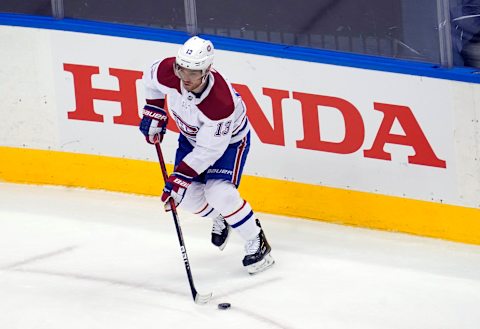
One-for-one deals
You cannot talk about Marc Bergevin without talking about his proclivity for the one-for-one trade. One team gives up one player and receives one player in return. That’s it. No retainment of salary or extra draft picks, just a player for a player. A hockey trade.
It became so prevalent it was a sort of calling card for Bergevin. And none was bigger than the trade that kicked off one of the craziest hours in NHL offseason history.
Steven Stamkos, captain of the Tampa Bay Lightning, needed a new contract and theories were flying, especially involving his hometown Toronto Maple Leafs and the Montreal Canadiens. Instead, Stamkos resigned in Tampa. At the same time, the Edmonton Oilers struck a deal to send star forward and former first overall pick Taylor Hall to the New Jersey Devils for defensive defenseman Adam Larsson. Optimistic Oilers fans pointed out that Larsson did indeed fill a much needed spot for Edmonton, but were quickly quieted when Hall won the Hart Trophy the next year.
And then that same hour, this happened:
This was earth shattering. The Predators traded their current captain for a younger, more offensive P.K. Subban, who, was so well liked in the community and has donated so much money into hospitals in Montreal, was seen as untouchable.
The truth was that Montreal’s leadership core was in shambles. Then captain Max Pacioretty was shouldering the blame for every little thing that went wrong, and was clearly uncomfortable in the role of captain. Hotheaded Subban was rubbing certain teammates the wrong way, and head coach Michel Therrien had no control and fights during practice were common.
Now all of them are gone, and Weber is the captain of the Habs, even if he is semi-retired. He provided years of a steadying presence on the blueline, and most importantly, a huge leadership presence on the team.
Subban had some productive years with Nashville, before his offensive output fell off, and he has never been good in his own zone. Today he is playing with the aforementioned Devils, and is more well-known for slew-footing opponents than playing good hockey.
This was a head scratcher at the time. Galchenyuk was a third overall pick who did have a 30 goal season under his belt. Max Domi had a great rookie season, but failed to put up great offence since. But it was clear that both players needed a change of scenery.
It instantly payed off for Domi and the Canadiens, who scored just shy of a point per game, and was part of one of the most entertaining Montreal teams in recent history. Jesperi Kotkaniemi was a rookie and the team was making crazy comebacks, and even if they were losing, they were entertaining while doing it.
Galchenyuk has bounced from team to team since the trade, and hasn’t stuck anywhere long since. A far cry from Domi’s 72 points and his own 30 goal season years ago.
Domi wasn’t long for Montreal either and after a lackluster second year, he was traded in the offseason to the Columbus Blue Jackets along with a third round pick for Josh Anderson. Its so close to another one-for-one, but alas Bergevin needed to add a third rounder.
For the record, I like Anderson more than Domi, or at least the idea of Josh Anderson. He is one of a kind if he can play consistently, but I think he provides more when he isn’t scoring than Domi. Domi and Anderson finished with the same amount of points last year, but Domi was healthy scratched at points by Columbus and was left exposed to the expansion draft but wasn’t taken.
The first out and out loss we are talking about. Mikhail Sergachev was a 9th overall pick, and was seen as a blue chip defensive prospect. In fact, Bergevin said a week before this trade was made that he wouldn’t trade Sergachev.
The player that changed his mind was Quebecois forward Jonathan Drouin. He was a third overall pick, and is the most talented player on the ice at any given time. The skill is tantalizing if the work ethic isn’t always there. So Bergevin pulled the trigger.
So far, the trade has worked well for Tampa, scoring a young top-4 defender that has been able to put up points while being sheltered by the Lightning’s fantastic D-corp.
Drouin has been a different story. There are flashes of something there, just never enough. One year he had 17 points in 17 games, but a wrist injury sidelined him for most of the year, and when he came back he wasn’t the same. This year Drouin had points in almost every Montreal goal, but now his name doesn’t come up on the scoresheet nearly as often.
Its too bad. Bergevin took a risk on Drouin, and so far it hasn’t turned out in his favor. If Drouin could reach his full potential this trade could be a wash, but so far it hasn’t and every year that passes makes it seem less and less likely.
Unfortunately this trade might be the most talked about along with the Weber-Subban trade. People love the clear cut winners and losers, and there aren’t too many more clear cut losses than this.
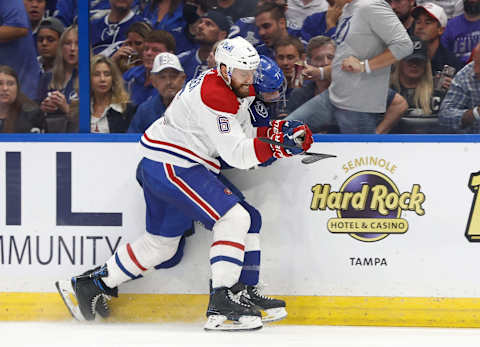
Love affair with defensive D
As previously stated, Marc Bergevin, as a hockey player, was a tough and physical defenceman that didn’t put up very many points. I think I can see a little pattern in the defensive players that Bergevin liked to sign and trade for.
The clearest example of this is the Subban – Weber trade. Say what you will about the trade itself, but it was an offensive player for a defensive player. Weber has the hardest shot in league history, and is able to get it off pretty reliably, but it is very one-dimensional and is only really seen on the powerplay. Subban is bad in his own end, everyone knows that, but during his time in Montreal, Subban was great offensively.
In my opinion, the trade worked out well in Bergevin’s case, but it builds a blueprint for the type of defenders that Bergevin usually sought out.
One of the worst decisions that Bergevin ever made was signing Karl Alzner to a big contract. $4.625 million for 5 years and a modified no movement clause. That is almost double Alzner’s previous contract with Washington. And in Washington he was pretty good. Nothing special, especially in the offensive zone, and he had a nice little iron man streak going, 622 straight games played.
But that was ended when he was healthy scratched in his second year in Montreal. Soon enough, he hit the waivers, and played in the AHL with the Laval Rocket for a while. All respect is due to Alzner, who took the demotion like a champ and played in Laval instead of refusing. Its not his fault that Bergevin offered him a terrible contract. Who wouldn’t sign that?
But look at Montreal’s current defensive corp. Shea Weber is injured, possibly for good. Then there’s the first pairing of Jeff Petry and Joel Edmundson when healthy. Second pairing of Ben Chiarot and David Savard. And then a handful of third pairing guys including Sami Niku, Alexander Romanov, Mattias Norlinder, Brett Kulak and Chris Wideman.

Notice anything about that top 4? There are three of the slowest, most physically imposing d-men you can find in the NHL today. 6’5″ Joel Edmundson who has topped out at 20 points in a season. 6’3″ Ben Chiarot who has similarily only scored 21 points in his best offensive season. And 6’1″ David Savard, who had a massive outlier of a season in 2014-15 with 36 points.
The outlier is Jeff Petry, who can play with the puck on his stick and in the offensive zone; he has had over 40 points in the last four seasons. But Petry cannot play 60 minutes and start every rush up the ice.
There are some interesting pieces in the bottom pairing, but they are mostly wild cards, and there is a reason that they bottom pairing. Chris Wideman has been decent, with 8 points in 17 games on the bottom pairing. Niku is an interesting young player, but his Montreal career was derailed quickly by a concussion in the preseason. Norlinder is really exciting, but is in the NHL much too early, and should be definitely be in the SHL. Romanov is another fun prospect, but isn’t looking to be an offensive player.
The best defenders in Montreal are big and defensive. The forwards are stranded to create offence all on their own, and it is a big strain, especially on zone entries and fast breaks. In the playoffs last year, the first Montreal defender to register a point was Jeff Petry in Game 6 against Toronto. That is 5 games that the Canadiens got absolutely zero offence from their defenders. The first defender to score a goal in the playoffs was Erik Gustafsson in game 4 of the second round against the Winnipeg Jets.
That has summed up Bergevin’s relationship with defence. “Let’s get the big, burly defenders, like I was back when I was a player, and then fill in the bottom pair with some interesting offensive weapons.” But they aren’t good enough to shoulder the brunt of the offensive output, or aren’t given enough time on the ice to contribute meaningfully.
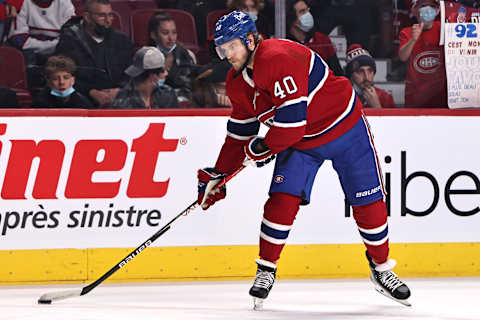
Trade Deadlines
The trade deadline was always an interesting time for Marc Bergevin’s Canadiens. If he was selling, the man was a master at getting bang for his buck and taking advantage of other teams trying to bulk up for a playoff run.
One of his best moves was sending aging forwards Tomas Fleischmann and Dale Weise to Chicago in exchange for young centre Phillip Danault and a draft pick that would be used to select Alexander Romanov. That is incredible return for basically nothing.
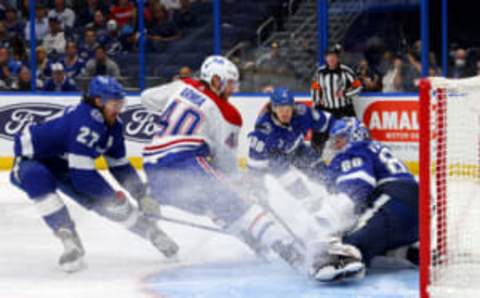
Joel Armia was picked up by Bergevin by taking on the contract of Steve Mason and giving Winnipeg just Simon Bourque. He also got two draft picks for the trouble. Another shrewd move was moving Lars Eller for two draft picks, one of which was used to pick Joni Ikonen. Unfortunately, injuries derailed his career, and Montreal did not qualify him, but the talent and possibility was there.
Just don’t ask Bergevin to gear up for a deep playoff run. While Bergevin does manage to get assets while giving up basically nothing in return. The problem is that what Bergevin gets in return is not worth it. Let me introduce you to the 2017 trade deadline.
Bergevin picked up Jordie Benn, Brendan Davidson, Steve Ott, Dwight King and Andreas Martinsen; he gave up a fourth round pick, Greg Pateryn, David Desharnais (with 20% salary retained), a 6th round pick, a conditional fourth round pick and Sven Andrighetto. I will save you the trouble and tell you that none of the draft picks turned into any player of note.
But just as well, none of Ott, King, Davidson or Martinsen worked out either. The only player that stuck around in any real capacity was Benn, who stuck around for a couple of years. Ott was fine for a fight or a faceoff win, but King was one of the worst players that I can remember seeing in a Canadiens uniform.
It was a similar story this year. Although Bergevin’s Canadiens made it to the Finals, there was not too much help from the deadline acquisitions. Jon Merrill and Erik Gustafsson both struggled to stay in the lineup, and did little to aid the top 4, who were ridden as hard as defencemen can be ridden. Eric Staal did provide some leadership and offence in the playoffs, but was abysmal during the regular season.
Making a Team
But what Bergevin truly excelled at was creating a team. Throughout all of his career as General Manager, he always seemed to get the most out of players that were on the fringes of the lineup. Players like David Desharnais, Torey Mitchell, Bryan Flynn and Dale Weise all experienced their best years in the NHL as a member of the Canadiens. Each would move on from the team and not be able to replicate the success that they experienced here, under Bergevin.
Bergevin has always preached that offence should be used as a four line unit, with all players contributing equally. Its that mentality that could be the reason why all these bottom sixers all excel. They are given a lot more opportunity than other places. Now, that can be attributed to Bergevin’s failure to get high end offensive talent on the team, but the truth is, that Bergevin always seemed to put his players first. Jonathan Drouin recently opened up about how Bergevin helped him during his leave of absence last year.

Legacy Contracts
I don’t know if these have a specific name, but I will call them legacy contracts. They aren’t exactly being paid for what they are performing at now, but for the good of the team, and the player that has given up so much of their career for this team.
I think this started in Montreal with Tomas Plekanec. In 2018, Plekanec was in the twilight of his career, and was traded to the Toronto Maple Leafs, essentially in order for him to chase a Stanley Cup ring. As the Leafs crashed and burned out of the first round, Plekanec was a free agent and resigned in Montreal. Plekanec played his 1,000th game, scored a goal in that game, and retired.
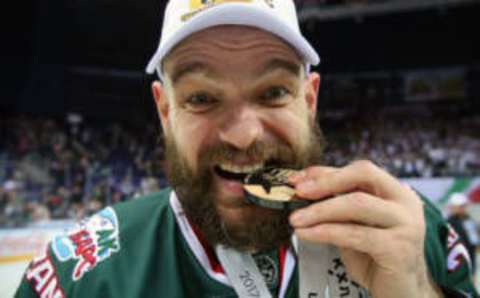
I don’t know if Bergevin felt slighted by that, since after then, Bergevin has completely skimped on any contracts involving older players. One of the most egregious was that of Andre Markov. Markov is one of the best, maybe the best since Montreal’s last Stanley Cup win, and I’ll stand by it. At the time of the contract, Markov was at the end of his career, but still had some good years in him.
At his prime, Markov was THE powerplay quarterback and when paired with P.K. Subban, the two would work magic on the blueline. And the thing with Markov, was that he was still responsible in his own end. And Markov’s strength was his mind and hockey sense, something that doesn’t go away with time. But when it came time to giving Markov a new contract, Bergevin refused to give him a new one on the basis that Markov wanted two years.
It was the same story almost to the letter with fan favourite Corey Perry. Perry started off as a healthy scratch, but played his way onto a regular spot, and became a strong leader on a young team. Perry wanted a two year contract, Bergevin refused and Perry was taken off to Tampa Bay.
Conclusion
After just over 9 years of being General Manager, its impossible to not come up with a mixed bag. The question is will the good outweigh the bad when it comes to Bergevin’s tenure?
It is disingenuous to say that Bergevin was a bad General Manager. In particular, last year’s offseason was a huge success. Picking up Josh Anderson, Jake Allen and Corey Perry all worked out terrifically, and the team made the Stanley Cup Final.
The problem is that most Bergevin teams failed to make the playoffs. And after what is seeming like more of a flash in the pan last year, Bergevin has failed to create a Cup contender in almost ten years. And there has been more wheel spinning rather than actually getting better.
But is that his fault? Trevor Timmins has been doing Bergevin no favours by drafting terribly. But then again Bergevin was the one that kept Timmins on the staff, and all the draft picks presumably were signed off on by Bergevin himself.
And there is the question of if you can make a Stanley Cup winner without rebuilding. Because Marc Bergevin did not rebuild. He wasn’t really given the option. The Montreal Canadiens are amongst the most proud sporting teams in the world. It is hard to see the team being expressly bad for the future. Too many people would be calling for the heads of everyone involved to roll before any results could be found.
Would what happened in Ottawa happen in Montreal. Could the Canadiens stomach the Shanaplan? Personally, I don’t think so.
So, did Bergevin do the best he could do given the tightened restrictions of not being able to rebuild. Maybe he couldn’t have done better.
But that isn’t a strong enough thing for people to latch onto. There has to be a strong position for people to argue. I think that people will look at Bergevin’s time as General Manager as some good moves, but was ultimately never able to take the team to the next level.
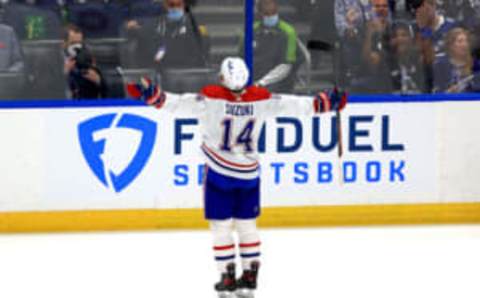
There might be two words that could sum up Bergevin’s impact and legacy with this team: Nick Suzuki. Bergevin’s crowning jewel move might be the trading away of then captain Max Pacioretty for Nick Suzuki, Tomas Tatar and a second round draft pick. While Tatar was a good top 6 regular season competitor, Suzuki is a young star in the making.
Most of Bergevin’s moves can be considered as tire spinning. Trading good players for good players, bottom six for bottom six, and mostly staying in place. The Canadiens have been bad in Bergevin’s tenure, and they have been decent, but they have never been steady playoff contenders or even Stanley Cup contenders. Let’s just say that some of Bergevin’s final moves of yo-yoing Cole Caufield in and out of the AHL is pretty fitting.
But if Suzuki turns into a superstar and the Canadiens win the Stanley Cup with Suzuki as a core piece of the team, Bergevin will always be remembered as the man that brought in Nick Suzuki, no one can take that away from him. But will that happen?
Honestly, there are two things that I think might completely incapsulate Bergevin’s time with the team. They are both common soundbites that have run rampant throughout his career: “Make the playoffs and anything can happen.” and “It is really hard to get top end offensive talent.”
The Montreal Canadiens never truly aspired to anything more than playoff hopefuls. It was rare that the Habs would be playoff locks in recent years, and were always maybes. But Bergevin said that anything could happen in the playoffs. The eighth seed could go on to win the Stanley Cup, so who needs to be contenders? Who needs to rebuild to become great team, when an okay team could get hot and make a run to the Final?
And this might not be his fault, it is an inherited problem that has plagued this team for so long, but Bergevin did this no favours, in that the Habs have had major problems scoring. The team was built from Carey Price out, with focus on defence, and left very little for the offence. Pacioretty was a clockwork 30 goal scorer, but could not carry the offensive load for the whole team. He couldn’t create offence for others.
That has been the story of Bergevin’s teams. Toffoli had a career year last year, and that satiates everyone for a year, but now that Toffoli has dried up, the Canadiens have cratered and no one can score consistently.
Excuses. That was the mantra of the Bergevin regime, ultimately. Its hard to get a good team together, its hard to score in the NHL, if you have an okay team you can get lucky in the playoffs. It might be a little harsh on his time and his impact on the team, but I think that will be how Bergevin will be remembered. Excuses and mediocrity.
Must Read. Montreal Canadiens Rumours: Ben Chiarot Drawing Plenty of Trade Interest. light